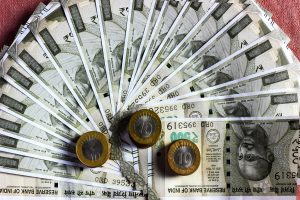On 16 March, in a message that was widely publicised globally, WHO chief Tedros Adhanom Ghebreyesus told nations to “test, test and test” for the novel coronavirus. This prescription has been followed around the world. Governments ~ including India’s ~ that have not tested enough have been widely criticised for being laggards, including by rambunctious television anchors long divorced from the journalistic virtue of understatement.
Yet, the growing incidence of false results and faulty tests have raised questions about the efficacy of this strategy. Earlier this week, a Reuters report from China enumerated incidents where false test results had impeded diagnosis. A report from the United States ten days ago highlighted how high numbers of false test results were a frequent occurrence in hospital emergency rooms.
Advertisement
Ignoring these markers, governments and public health professionals have moved beyond testing those presenting with symptoms to extensive testing sometimes based on mere suspicion and, as happened earlier this week in India, using a Chinese rapid antibody test which had already been rejected by various other countries.
In doing so, India even ignored specific advice from WHO which is in the eye of the Covid storm for its handling of the crisis. On April 8, the organisation had unambiguously warned against the use of both antigen-detecting and antibody-detecting rapid diagnostic tests for patient care. At about the time questions began to be raised about the efficacy of Covid testing, China bowled another googly.
It reported that a large majority of coronavirus cases do not result in symptoms. The well-reputed and peer-reviewed British Medical Journal reported: “Chinese authorities began publishing daily figures on 1 April on the number of new coronavirus cases that are asymptomatic, with the first day’s figures suggesting that around four in five coronavirus infections caused no illness. Many experts believe that unnoticed, asymptomatic cases of coronavirus infection could be an important source of contagion.”
With this conclusion, the Chinese effectively put paid to testing protocols that had confined themselves to those with symptoms. In short, everyone on earth ~ whether or not he or she was actually sick ~ was declared potentially sick and therefore a candidate for testing.
The alacrity with which the world and its experts have responded to Chinese findings might seem surprising given that the country itself has been so opaque about Covid. For instance, while China has reported the numbers of its infected patients and the number of fatalities (including an eyebrow-raising upward revision a week ago), it has not told the world how many of its citizens it has tested for Covid, nor provided details of the testing protocols it has used.
And now, researchers in Hong Kong have reported that more than 232,000 people may have been infected in the first wave of Covid-19 in China, more than four times the figure put out by Beijing.
In short, all the evidence that is available suggests that the world may have acted foolishly in accepting the narrative of a country that has been shown to have been economical with the truth. As our lockdown enters a second month, it is time to sift fact from conjecture, to ask if we are being led up the garden path.











